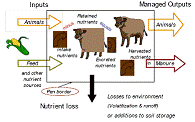Biological Systems Engineering
Date of this Version
11-2008
Abstract
To date, most efforts to understand and improve the efficiency of nonviral gene delivery have focused on altering the physicochemical properties of delivery systems and developing new delivery strategies. The importance of the cellular microenvironment in achieving successful nonviral gene transfer has not been thoroughly examined, though proteins of the extracellular matrix (ECM) mediate cell adhesion and serve to regulate cellular behavior that may, in turn, dictate the cellular responsiveness to nonviral gene delivery. Self-assembled monolayers (SAMs) of alkanethiols on gold were used to control adsorption of ECM molecules and thus control the architecture of the extracellular environment presented to cells. SAMs of different surface chemistries were used to modulate the structure and activity of adsorbed ECM molecules to investigate how cells adhered to these ECM-immobilized SAMs respond to nonviral gene delivery. As an example ECM, fibronectin was immobilized to both hydrophobic and hydrophilic SAMs and mouse fibroblasts (NIH/3T3) were seeded onto the fibronectin- immobilized SAMs. DNA complexes (formed with plasmid encoding luciferase complexed with polyethylenimine or Lipofectamine 2000) were subsequently delivered as a bolus and transfection was assayed at 24 and 48 hours. Transfection on ECM-immobilized SAMs was measured using luciferase assays and compared to transfection in cells adhered to traditional polystyrene surfaces. Fibronectin immobilized on hydrophobic SAMs resulted in increased transfection levels relative to hydrophilic SAMs or control polystyrene surfaces. Furthermore, transfection was shown to increase as the concentration of fibronectin on the hydrophobic SAM was increased, indicating that hydrophobic interactions between the SAM and fibronectin resulted in a protein orientation that enhanced the ability of the cells to respond to gene delivery. A greater understanding of the ability of the extracellular environment to modulate gene delivery will enable the development of controlled and efficient nonviral delivery methods that incorporate appropriate ECM-cell interactions. In particular, controlling the architecture of the ECM could serve as an approach to enhance the ability of cells within a tissue engineering scaffold to internalize DNA, where gene delivery can present chemical factors to guide tissue formation.


Comments
Podium presentation, American Institute of Chemical Engineers Annual Meeting, Philadelphia, PA, November 18, 2008